Vinu Daniel on the glory of garbage in architecture and Chuzhi House
With an ethos of reuse and local sourcing, architect Vinu Daniel of Wallmakers is rewriting the rulebook for sustainable architecture and wins Best Earth Builder at the Wallpaper* Design Awards 2023
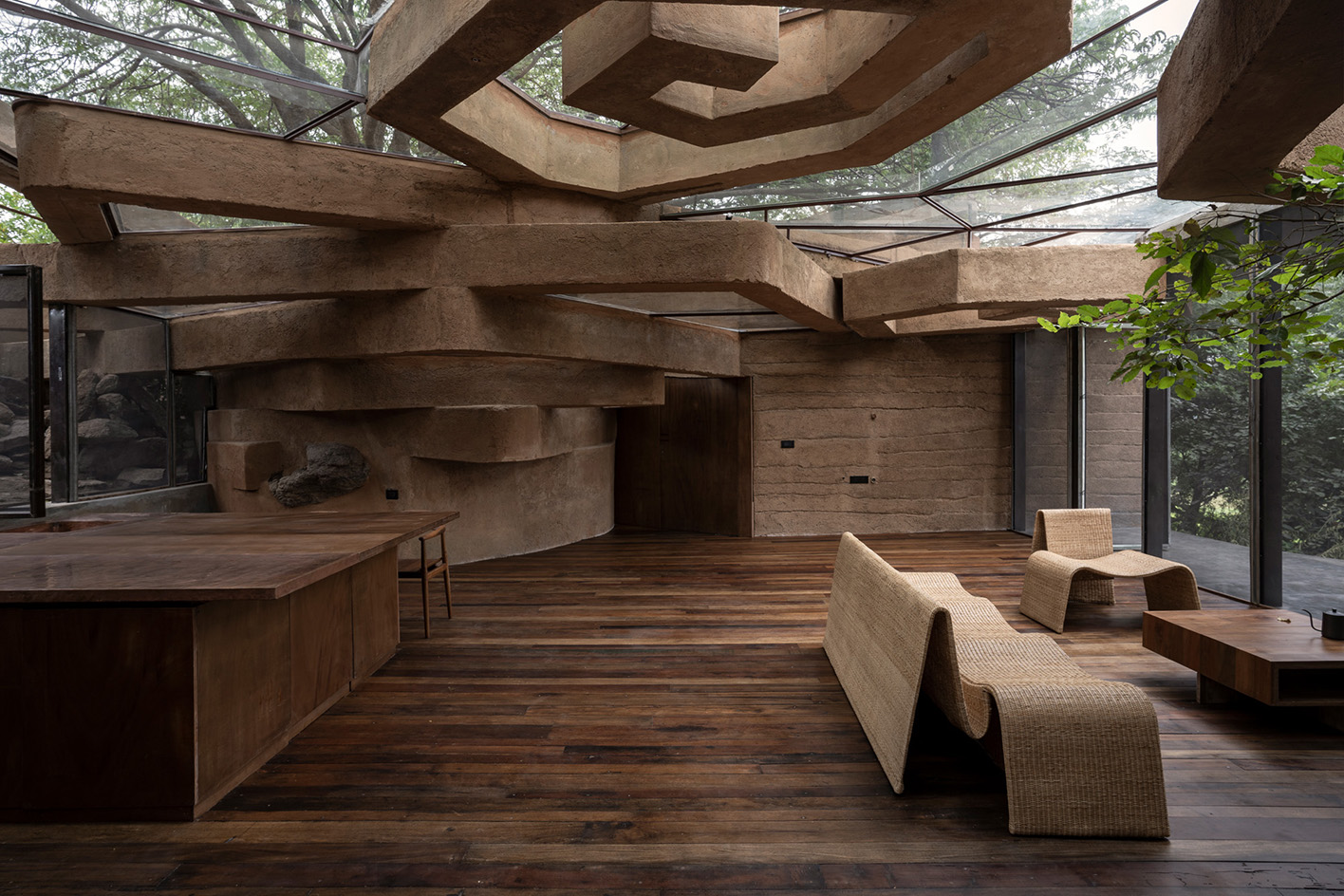
Vinu Daniel never aspired to be an architect. Born in Dubai to parents of South Indian origin, he was always expected to pursue something mainstream, such as law or medicine or even chartered accountancy. ‘Certainly anything but Carnatic classical music,’ jests the founder of Wallmakers of his childhood proclivity for the arts. In a bid to reconcile his passions and his family’s hopes, Daniel moved to India for university, enrolling at the College of Engineering Trivandrum for a degree in architecture. ‘I got into architecture, thinking that it would be a creative space where I could express myself. But within a year or two, I became disillusioned by the pedagogical framework [the teaching philosophy, systems and values] of the curriculum.’ It was a chance encounter with eminent British-Indian architect Laurie Baker in his fourth year of university that reshaped Daniel's world view.
The meeting with Baker served as the watershed for Daniel’s career, prompting him to ponder where, or whether, nature should end and built form should begin. ‘I was inspired by the idea that buildings should coexist with nature. Baker also told me something very profound about a meeting he once had with Mahatma Gandhi: that the real people we should be building for are the ones in need, the “ordinary” people in villages and congested catchments,’ he says. ‘But the most important thing that Gandhi told him, and one that has stayed with me, is that the ideal house in the ideal village should be built using materials found within a five-mile radius.’ Building on this concept, Daniel became intrigued by the idea of using earth: ‘Sadly, today, less than one-third of the world’s population lives in buildings made of earth, even though it is a much more sustainable and durable alternative to cement. I knew I wanted to help change that narrative and commit to reusing materials that had already made an environmental impact.’
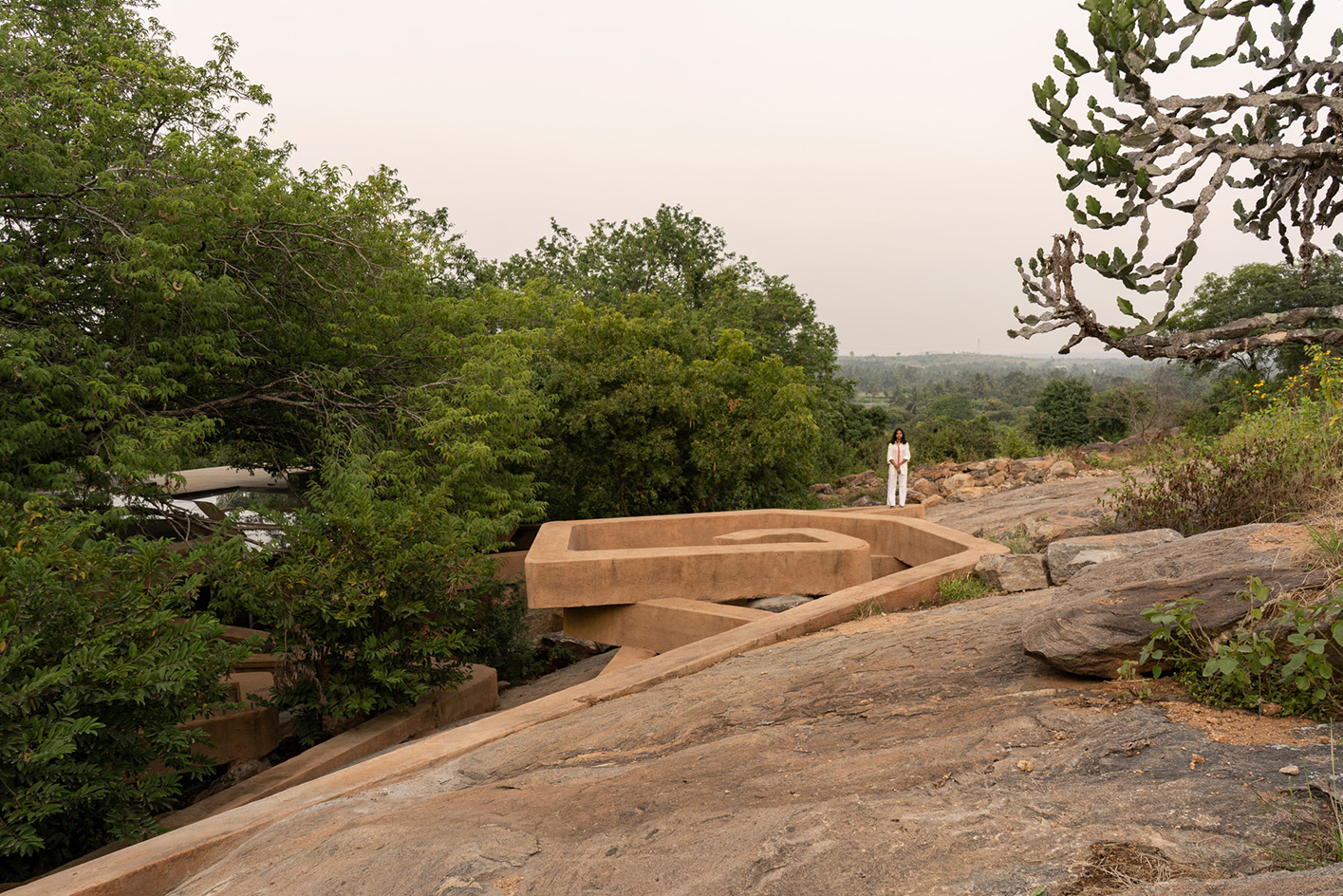
Chuzhi house is built on a rocky site using a camouflage construction technique that blends it into the landscape
Chuzhi house by Vinu Daniel and Wallmakers
Fast forward to today, and the afternoon light spills in through the ceiling of this new dwelling in Tamil Nadu. Daniel appears disarmingly collected, certainly not like someone who spent the morning staving off the fiery south Indian sun. From where he sits now, however, the sun seems like a distant neighbour, shielded generously by an overarching rock bed and a leafy canopy of trees. In a sage button-down and faded jeans, he looks as much a part of the subterranean landscape as the poured earth walls and precast composite beams that surround him. And while his colour-coordinated attire may be a coincidence, there’s nothing coincidental about this underground home that is his latest project.
For Daniel, the house – named Chuzhi, after the Malayalam word for ‘whirlpool’ – is special in many ways. ‘The house as such is hidden beneath the earth. It is our first subterranean build, but it's also our first attempt at building directly on to a rock face. We used a camouflage construction technique to blend the home into the landscape and keep it from hindering the natural beauty of its surroundings,’ he explains, gesturing to the swirling walls. These are in fact precast poured debris earth composite bottle beams, fashioned from 4,000 castaway plastic bottles, and spiral up to parlay into a perfectly flat, polygonal glass roof.
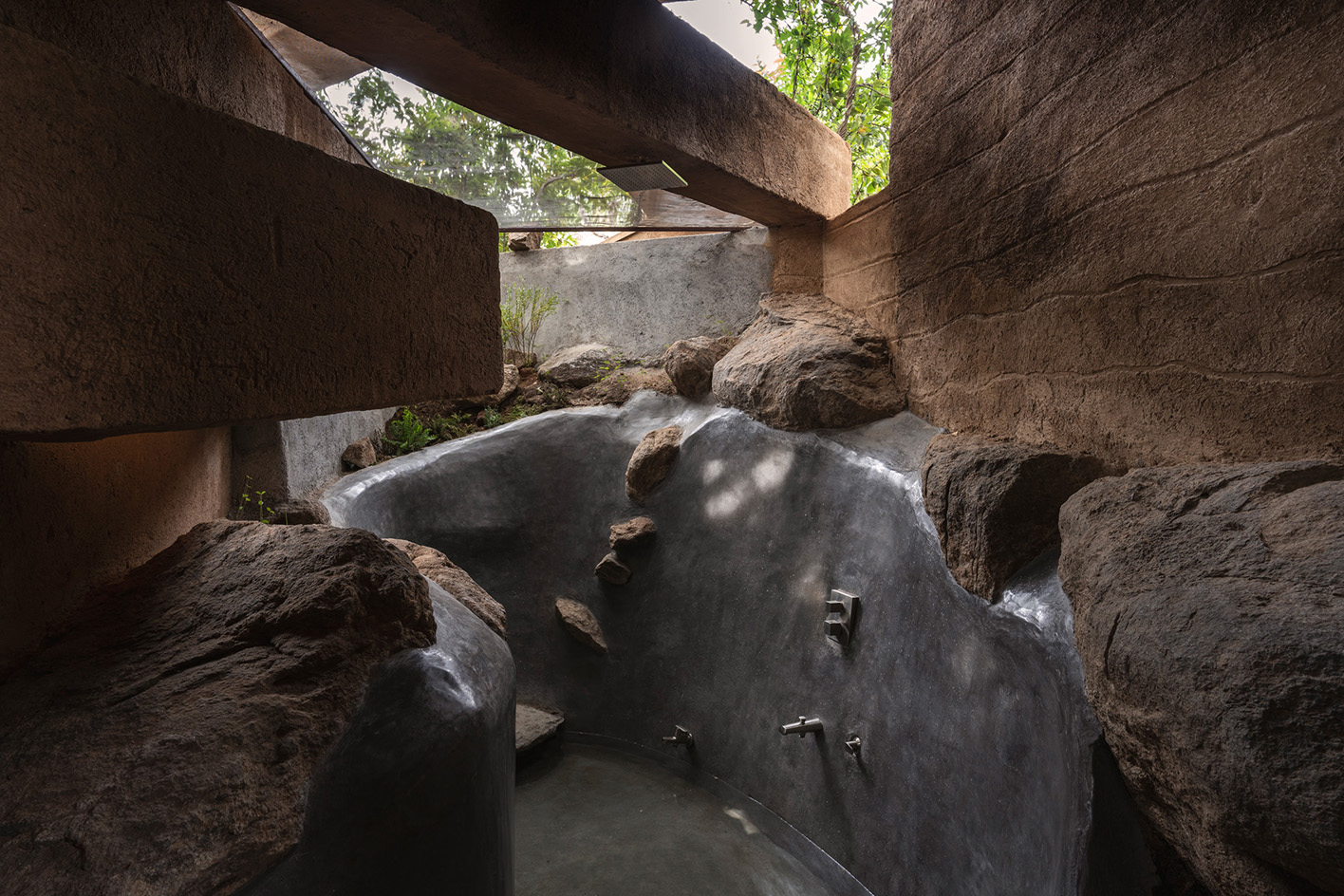
Chuzhi house is formed from a series of precast composite beams that spiral up to a flat, polygonal glass roof
True to Daniel’s Gandhian ethos, Chuzhi also stars other discarded materials scavenged from the original site: the floor wears reclaimed wood, and mud was the material of choice for the construction. Although the house has no elevation, the roof masquerades as a charming seating area, with the trees for company. ‘The idea was to leave the foliage and the surroundings true to their original form without compromising the comfort of the homeowners,’ says Daniel, who was given pretty much carte blanche to transform a tricky, rocky site with its two mature trees into a contemporary home.
The architect considers himself a disciple of the site, a philosophy he inherited from French architect Satprem Maini at the Auroville Earth Institute (located in the experimental Indian township of Auroville), where he moved in 2005 after graduating from university. ‘There I learned about Nubian techniques and vault making. I was also working on some rehabilitation projects in tsunami-stricken areas of Tamil Nadu at the time,’ he recalls. The series of experiences inspired an epiphany: ‘When I saw the calamity around me, it felt like a sin to be sitting in an air-conditioned office.’ At a time when his peers were opting for steady jobs at established firms, Daniel knew his calling lay in reimagining waste. On returning to Kerala in 2007, he started Wallmakers, named after its maiden project: a compound wall built with surplus mud bricks and discarded beer bottles.
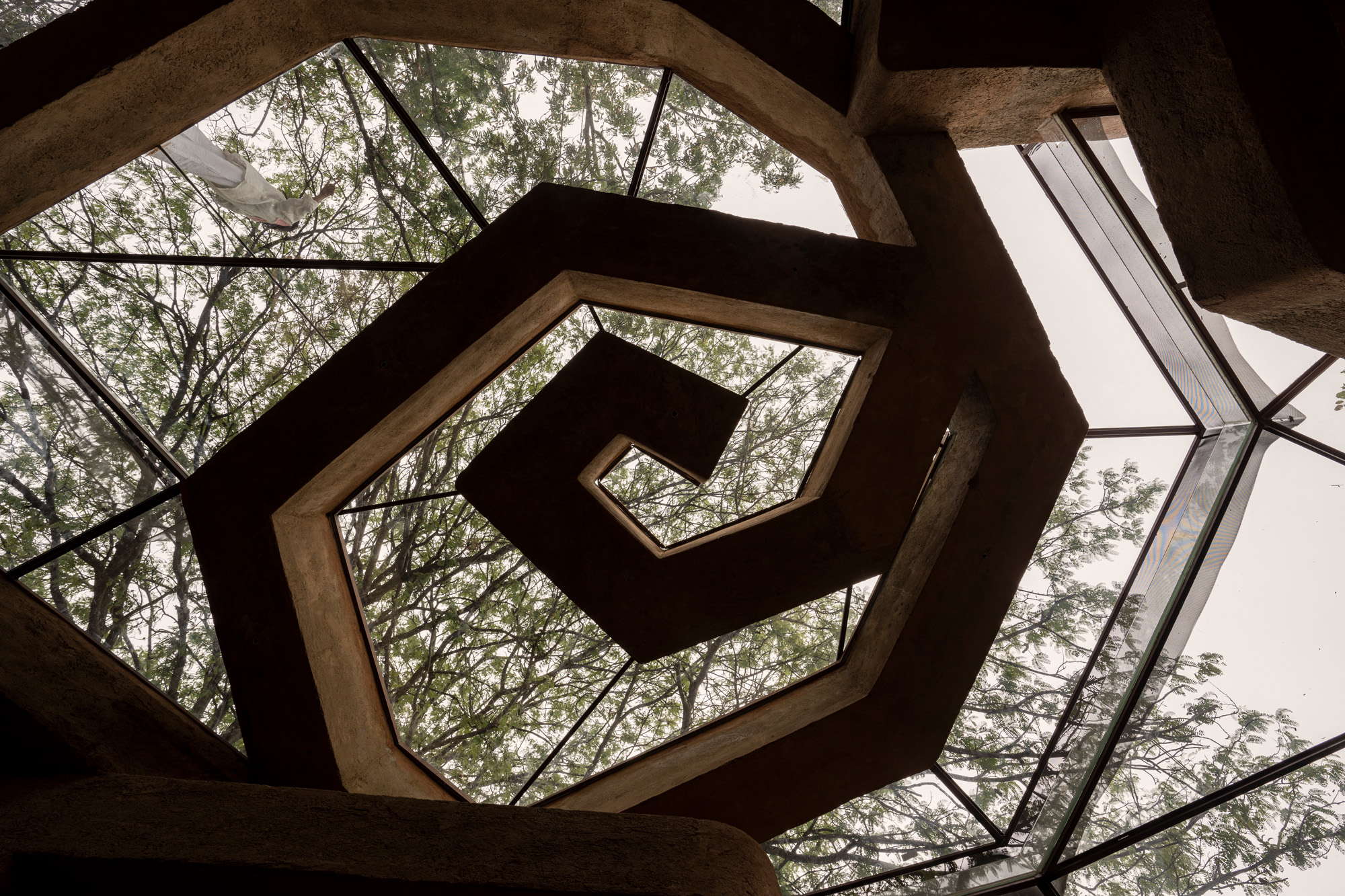
Over the years, Daniel has built up his own repertoire of techniques, most notable among them his now-patented debris wall and shuttered debris wall systems. The shuttered debris technique is most evident in Shikhara, a residence that he and his team completed in 2019. The site's soil was riddled with pebbles and debris, making it unsuitable for upcycling into mud bricks. The solution? Upcycling the stones – some as wide as 70mm – into the cement and soil formula. ‘In India, discarded plastic and construction debris are commonplace. This is precious waste. I look at it all as newly minted material because, who knows, this is all we may have in the future,’ he says.
Receive our daily digest of inspiration, escapism and design stories from around the world direct to your inbox.
In another project he took up a few years ago, later dubbed the Pirouette House, he used a variation of Baker's Rat Trap bond masonry technique. In doing so, he arranged the bricks vertically, rather than horizontally, to create wall cavities designed to augment thermal efficiency, reduce total brick volume and conceal service ducts and structural members, leading to 40 per cent less cement and 30 per cent less steel consumption. Daniel’s contributions have been recognised on the global stage; last September, he was awarded the prestigious Royal Academy Dorfman Award 2022 for Wallmakers’ pioneering material approach and sensitivity to local context and climate.
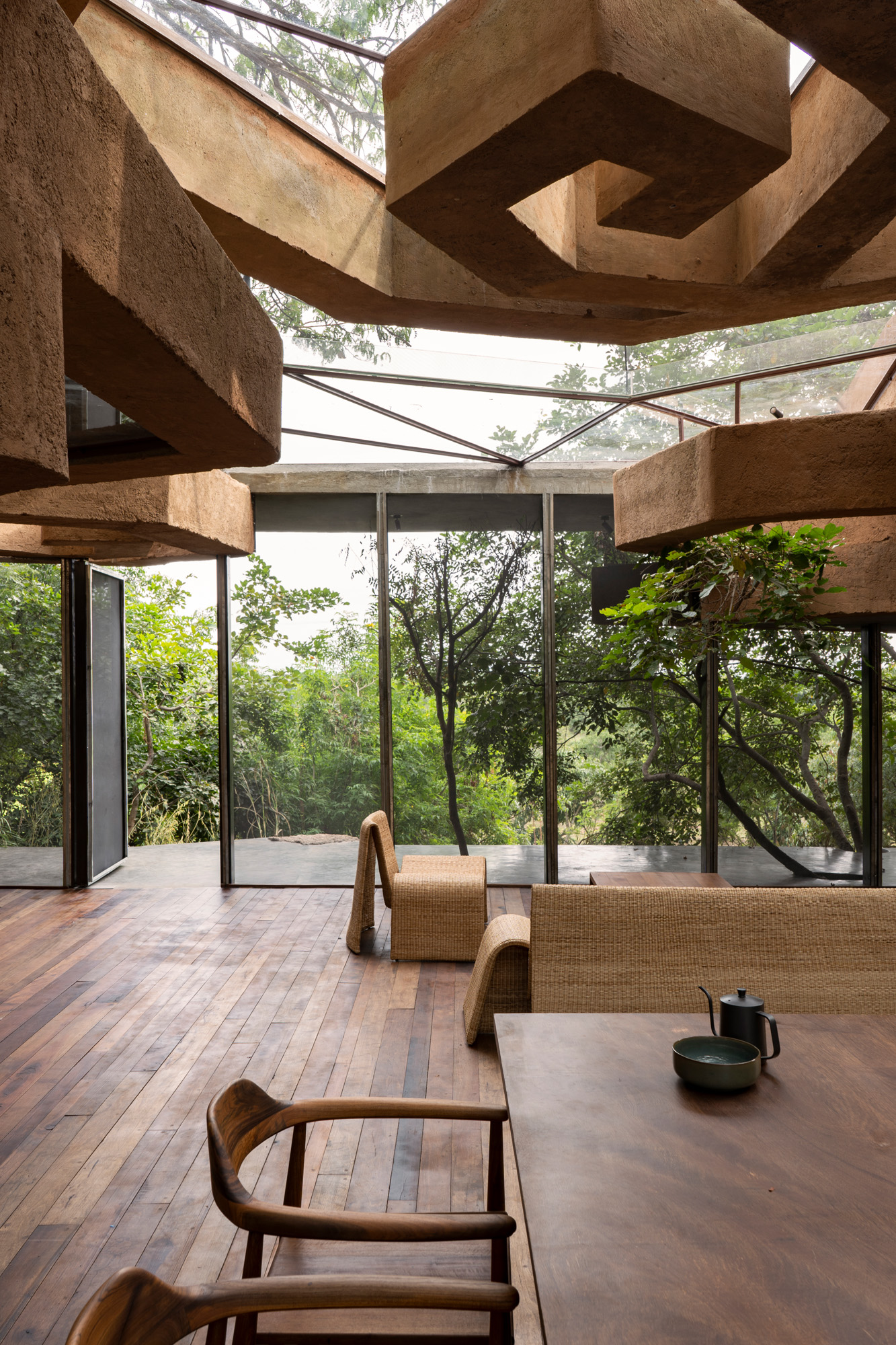
The light on the site is dimming now, and Chuzhi's swirling skylight appears as if a gateway to another world. The description is not entirely inaccurate. After all, with a brand of architecture as rare as Daniel's, the site is far removed from the homes that neighbour it. And yet, for the architect, there is a long way to go in honing his craft. For now, though, the site is his biggest teacher, and he, its biggest disciple.
-
 A tale of two Audis: the A5 saloon goes up against the A6 Avant e-tron
A tale of two Audis: the A5 saloon goes up against the A6 Avant e-tronIs the sun setting on Audi’s ICE era, or does the company’s e-tron technology still need to improve?
-
 Inside Christian de Portzamparc’s showstopping House of Dior Beijing: ‘sculptural, structural, alive’
Inside Christian de Portzamparc’s showstopping House of Dior Beijing: ‘sculptural, structural, alive’Daven Wu travels to Beijing to discover Dior’s dramatic new store, a vast temple to fashion that translates haute couture into architectural form
-
 A music player for the mindful, Sleevenote shuns streaming in favour of focused listening
A music player for the mindful, Sleevenote shuns streaming in favour of focused listeningDevised by musician Tom Vek, Sleevenote is a new music player that places artist intent and the lost art of record collecting at the forefront of the experience
-
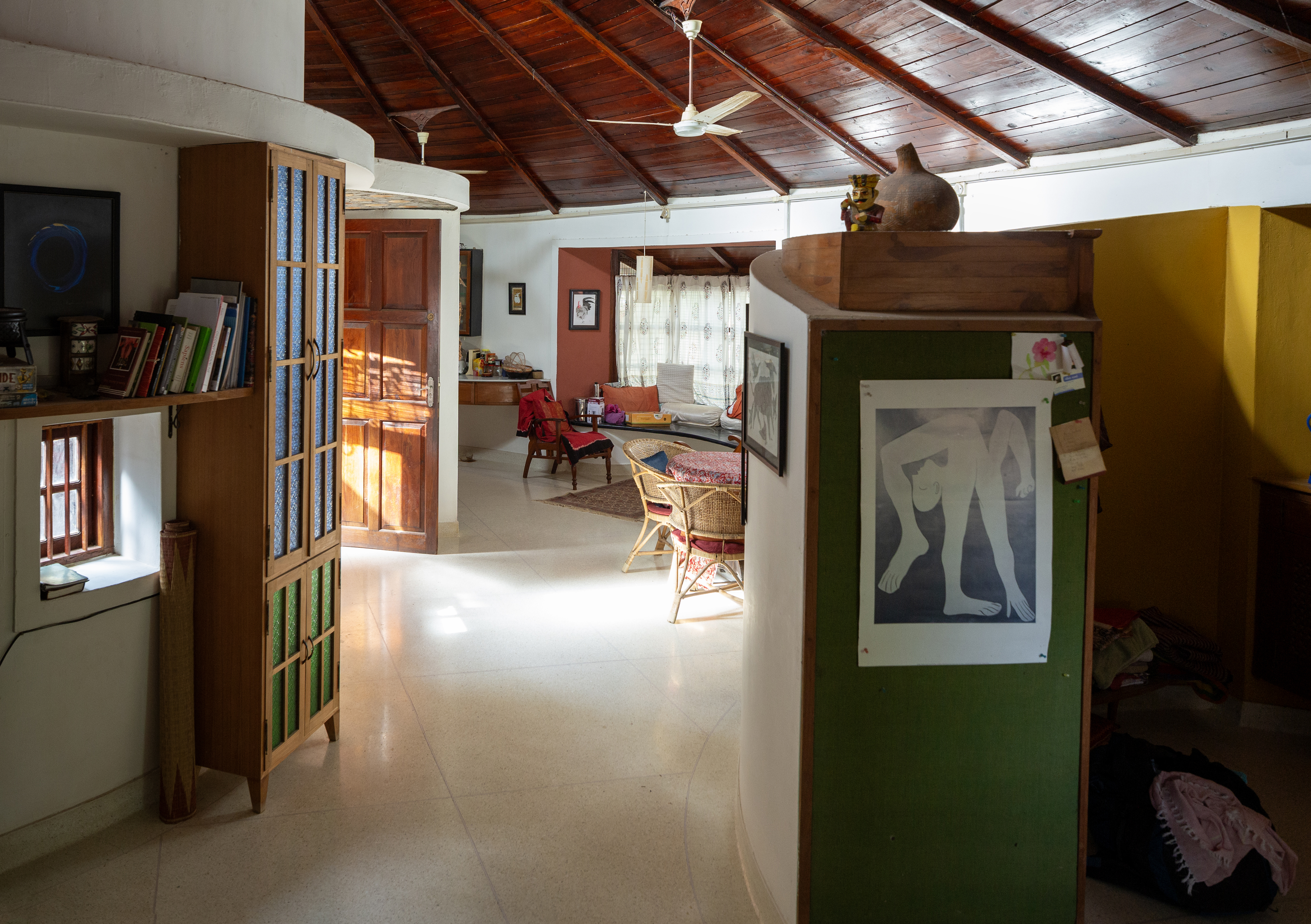 Inside a creative couple's magical, circular Indian home, 'like a fruit'
Inside a creative couple's magical, circular Indian home, 'like a fruit'We paid a visit to architect Sandeep Virmani and social activist Sushma Iyengar at their circular home in Bhuj, India; architect, writer and photographer Nipun Prabhakar tells the story
-
 The Architecture Edit: Wallpaper’s houses of the month
The Architecture Edit: Wallpaper’s houses of the monthFrom wineries-turned-music studios to fire-resistant holiday homes, these are the properties that have most impressed the Wallpaper* editors this month
-
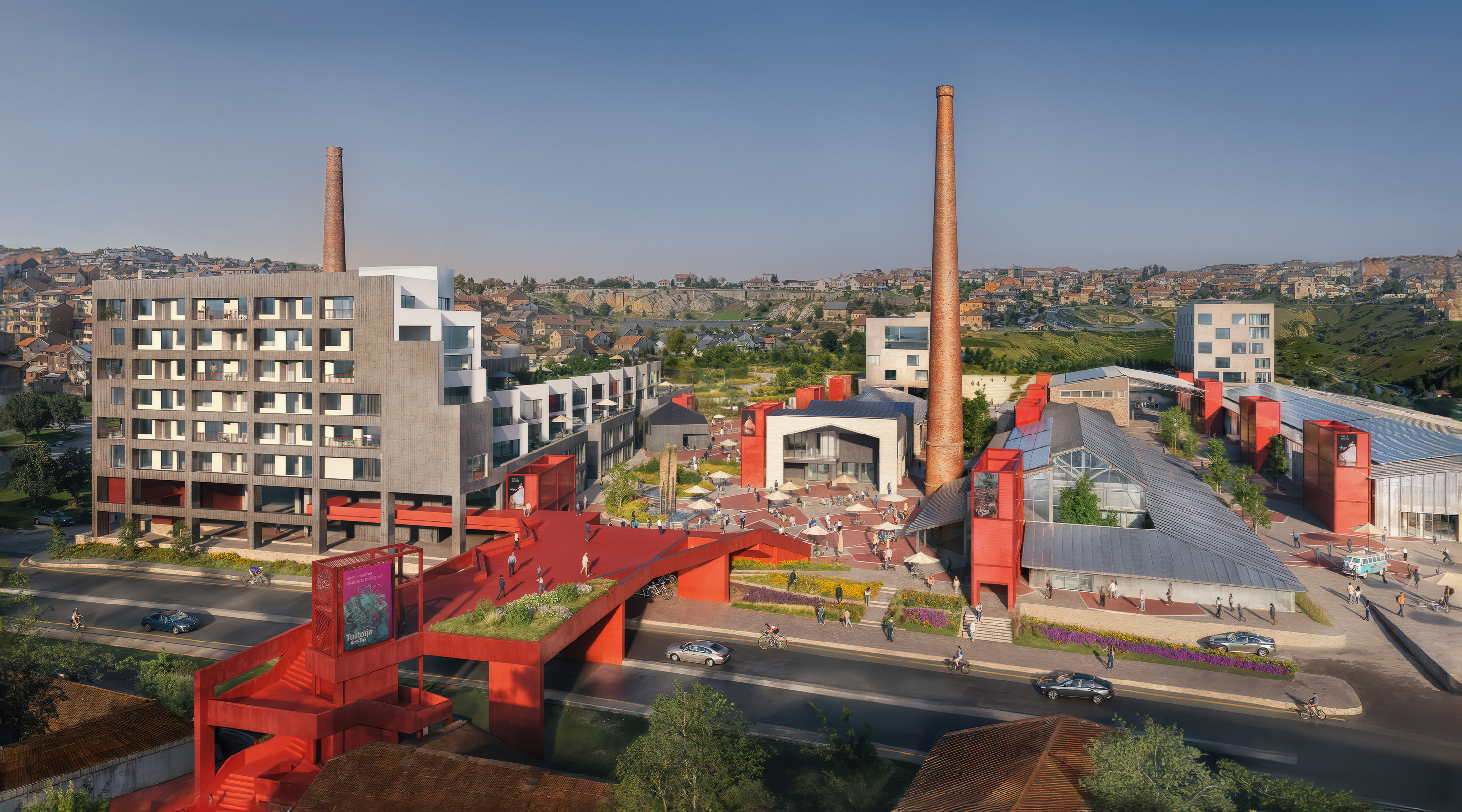 At the Holcim Foundation Forum and its Grand Prizes, sustainability is both urgent and hopeful
At the Holcim Foundation Forum and its Grand Prizes, sustainability is both urgent and hopefulThe Holcim Foundation Forum just took place in Venice, culminating in the announcement of the organisation's Grand Prizes, the projects especially honoured among 20 previously announced winning designs
-
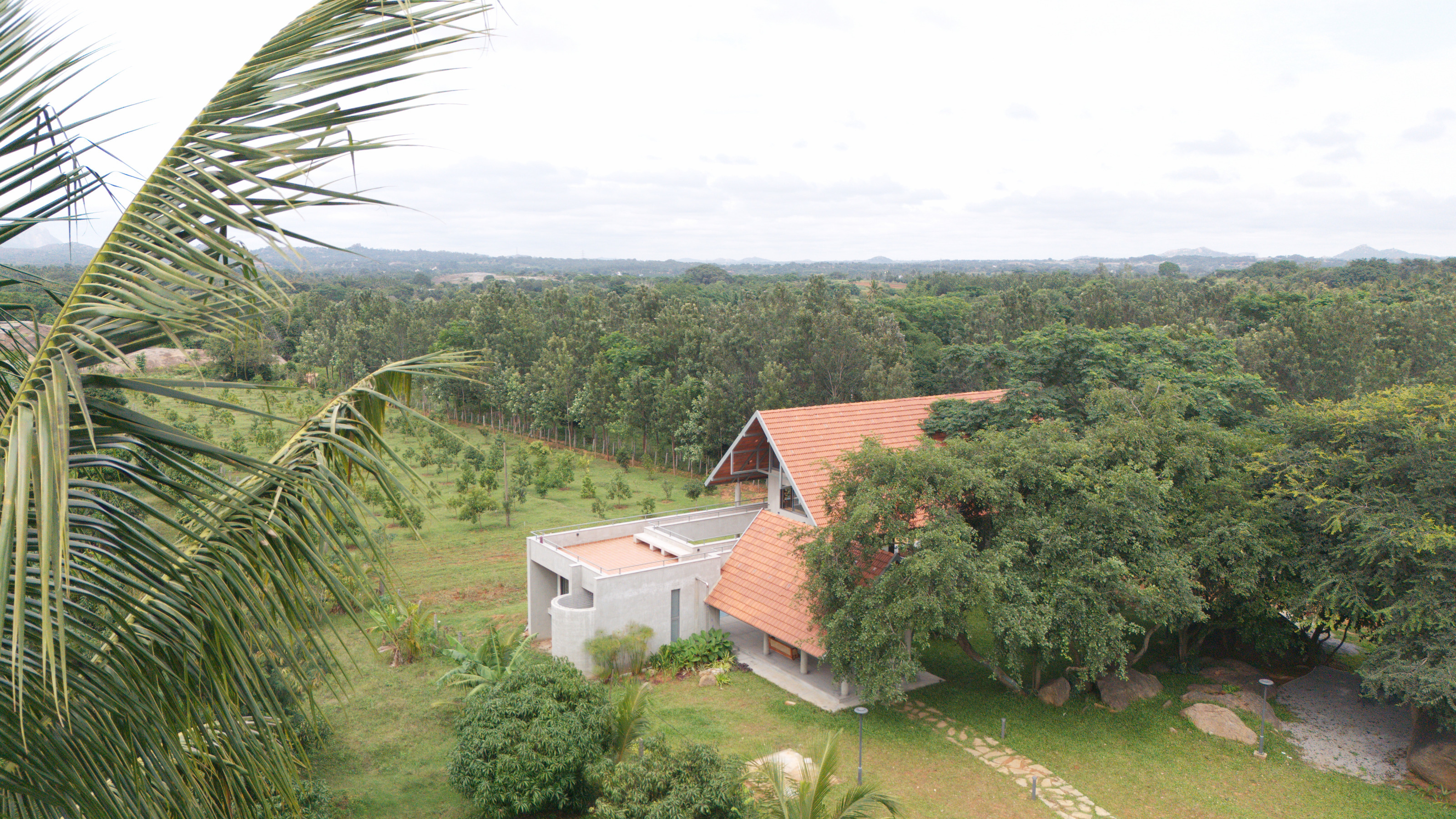 A refined Indian country residence reimagines the farmhouse
A refined Indian country residence reimagines the farmhouseSet among Karnataka’s rolling fields and forest, House by the Grove by Taliesyn Design & Architecture combines modern materials with an open approach to the elements
-
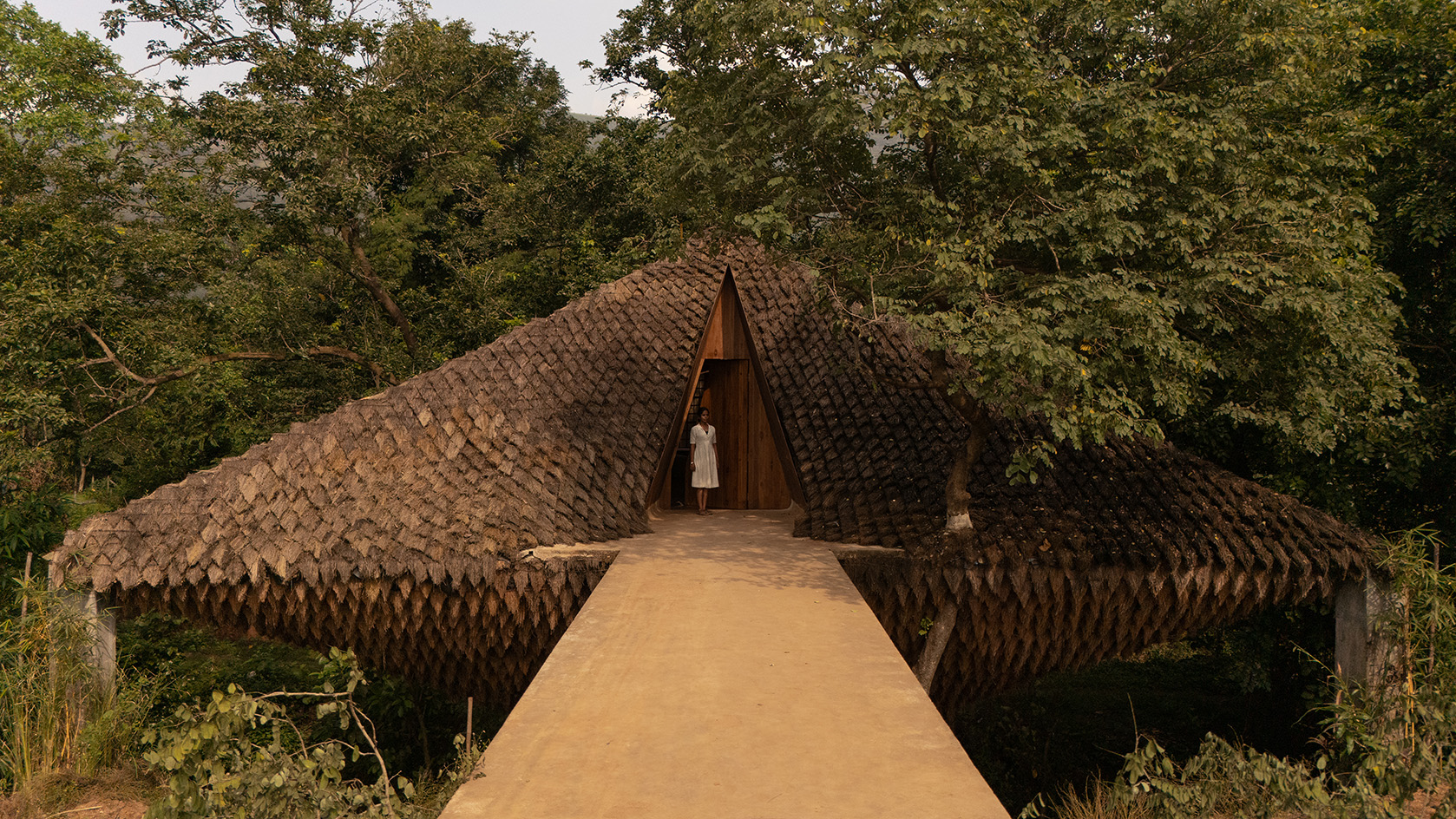 Half bridge, half home: Wallmakers’ latest project takes architecture to daring new heights
Half bridge, half home: Wallmakers’ latest project takes architecture to daring new heightsHovering above a forest stream in Maharashtra, Bridge House pushes the limits of engineering and eco-conscious design
-
 The Architecture Edit: Wallpaper’s houses of the month
The Architecture Edit: Wallpaper’s houses of the monthFrom Malibu beach pads to cosy cabins blanketed in snow, Wallpaper* has featured some incredible homes this month. We profile our favourites below
-
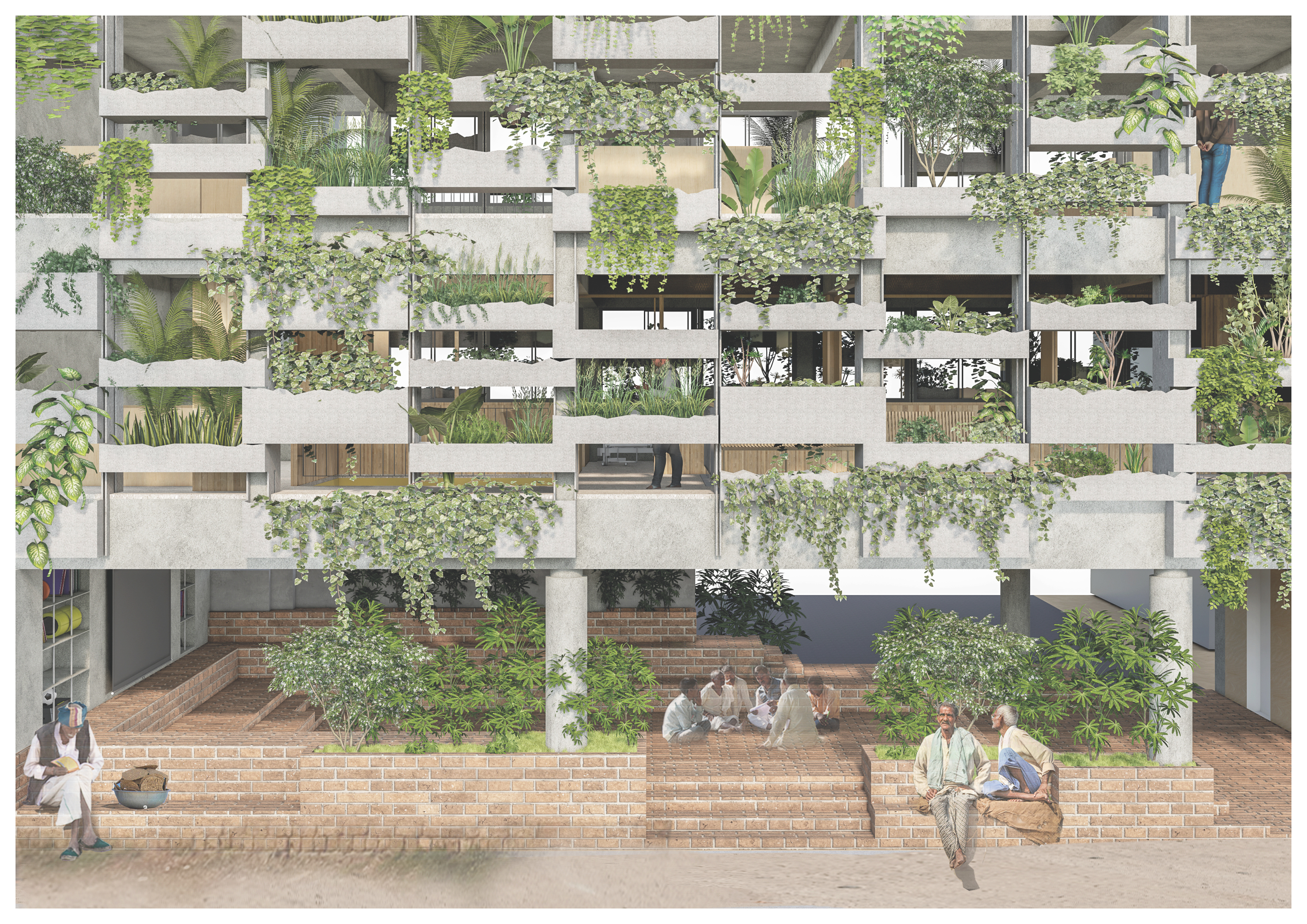 Holcim Foundation Awards celebrate sustainability with 20 winners; Sou Fujimoto explains all
Holcim Foundation Awards celebrate sustainability with 20 winners; Sou Fujimoto explains allThe 2025 Holcim Foundation Awards have just been announced, crowning 20 projects from across the globe as the most inspirational schemes in the field of sustainable architecture; we caught up with Asia Pacific jury chair Sou Fujimoto to find out more
-
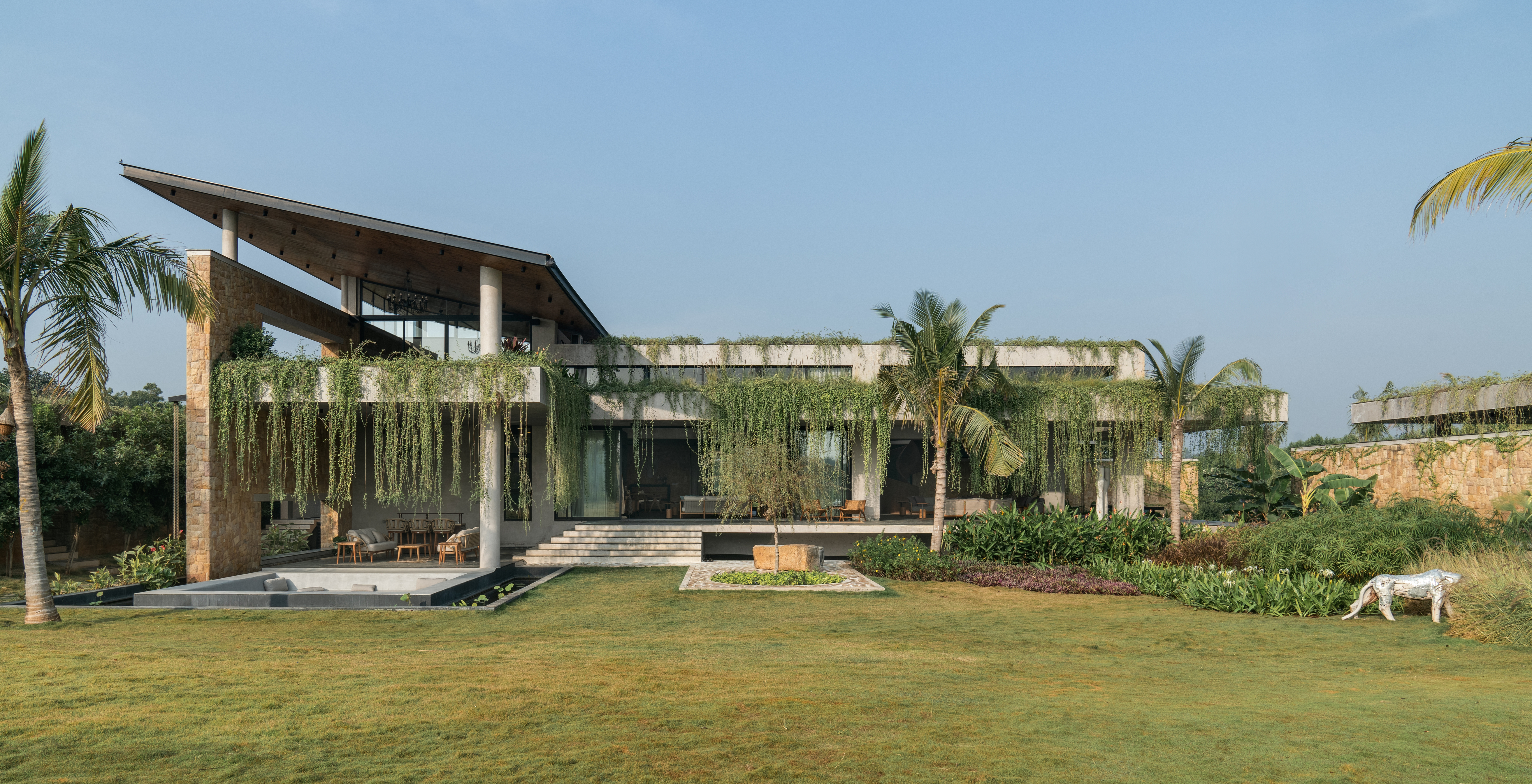 Cascading greenery softens the brutalist façade of this Hyderabad home
Cascading greenery softens the brutalist façade of this Hyderabad homeThe monolithic shell of this home evokes a familiar brutalist narrative, but designer 23 Degrees Design Shift softens the aesthetic by shrouding Antriya in lush planting